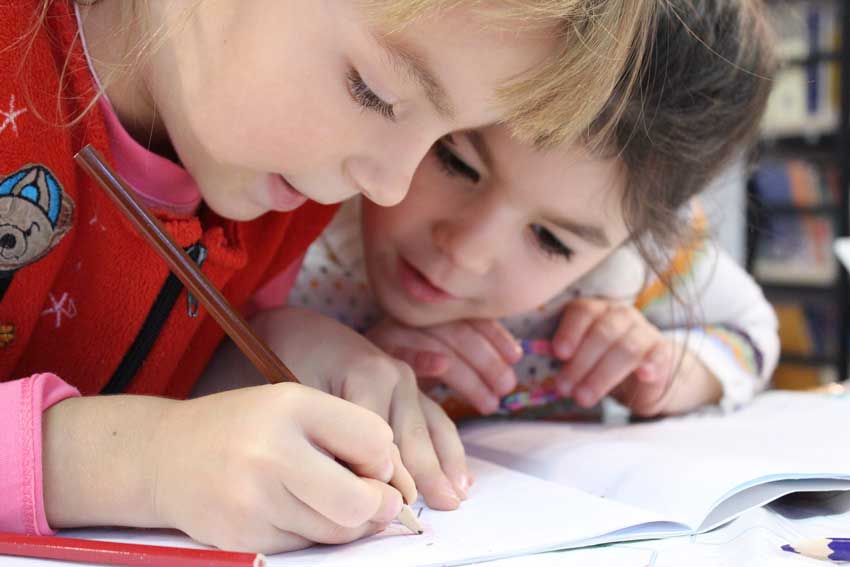
When the results from the NAPLAN 2018 testing session were released we had the first 10-year data set.
Once again girls seem to be achieving results in reading, numeracy, grammar and punctuation and spelling consistently above that of boys. While there has been clear progression since 2008 in these results for all learners, girls’ results seem to have stayed just ahead of the boys over the past decade. Of course, NAPLAN is only one measure of learners’ ability in schools, but currently it is one that schools and society pay much attention to.
Related article: Engaging boys in learning
So, what does this mean? There are many truisms which seem to endure over time about girls’ achievement. Nevertheless, the current theory around learning and that which drives most curriculum in Australia and other western societies is based on social constructivism.
Social constructivism and girls
Social constructivism suggests that learning is best done in groups and in social contact with others, in other words that learning is socially situated and knowledge is constructed through interaction with others. Of course, if this is true, testing such as NAPLAN which treats the learner as an individual working alone and autonomously lags behind the types of learning going on in classrooms today.
Often, we want to say (and this would suit girls) education happens best through social-situated learning and learning together through interaction and discussion. But I would hesitate to see this in such simple terms. All parents know that each child is markedly different and even those of the same gender display different attributes and may be inherently social or more of a lone operator.
 Ideas about gender and learning tend to point to girls displaying ‘good’ behaviour and boys displaying ‘bad’ behaviour. However, more recent research argues that rather than looking at gender differences, having a classroom that is facilitative and exploratory is more likely to include all learners. On the other hand, having a classroom where competition and expertise are central are more likely to exclude individuals and set up stereotypes around gender and other individual attributes.
Ideas about gender and learning tend to point to girls displaying ‘good’ behaviour and boys displaying ‘bad’ behaviour. However, more recent research argues that rather than looking at gender differences, having a classroom that is facilitative and exploratory is more likely to include all learners. On the other hand, having a classroom where competition and expertise are central are more likely to exclude individuals and set up stereotypes around gender and other individual attributes.
10 top tips for girls in schools
- Provide choice for reading and writing tasks: It has been thought that girls want to read narratives and storybooks about relationships and friendship groups (for example: Babysitters Club or Alice Miranda). There should be a continuous move to break the mould of narrative writing and encourage girls to read and write information texts and factual recounts both inside and outside of school.
- Unknown female role models in maths and science: Recently there is a focus on famous women in Maths and Science in popular culture – the recent Hollywood movie Hidden Figures captures the strong female mathematical work which underpins much of the famous scientific progress in the 20th century. A focus at home and in school on these historical and current day achievements will support girls in achieving in different ways than those usually expected in schools.
- Welcome different text types and recognise multimodal writing and reading as legitimate literate activities: Social media is often cast as being in opposition to traditional learning and school achievement. Clearly, well-positioned and safe social media interaction is all about learning in a social constructivist manner.
- Make learning more communicatively based: One of the key theorists in education is Vygotsky – his theory suggests that language and thought are linked, in other words that that mental representation has a linguistic structure. Let your girls talk about their academic work and what it means to them.
- Making learning both solitary, small group and larger groups for learning: To cater for individual differences, ensure that there are still opportunities for a range of learning and assessment opportunities in school and outside.

- Provide social opportunities: The role of family in providing social opportunities and times to build relationships in safe and comfortable places can only support learning inside and outside of schools.
- Make connections with what they already know from the cultural and family background and make those legitimate ‘funds of knowledge’ in the home and the larger community: Each family has its own story and characters and timelines. These are the social DNA that girls will find useful in building their own stories and identities both inside and outside their family and community. If the tale is different than others that they know, make that a point of celebration!
- Embrace the friendships and relationships: Girls like to have their friends around them, and some like to have quiet time at home away from their friendships, support them either way and remind them that talking about their ideas is helpful to making sense of them.
- Build resilience and strength and encourage identifying role models in the wider world: We are in a period of focus on the emergence of important roles for women – women as political leaders some of whom are forging new models of leadership; women Hollywood directors who are forging new styles of movies, and other leaders such as Jacinda Ahern who is demonstrating female political leadership in a different way. Talk about it.
- Recognise that we are all learners too! Remember the old saying, “you learn something new every day?” It is important that students understand that learning is fun and we all do it every day of our lives even after the school experience is over.
